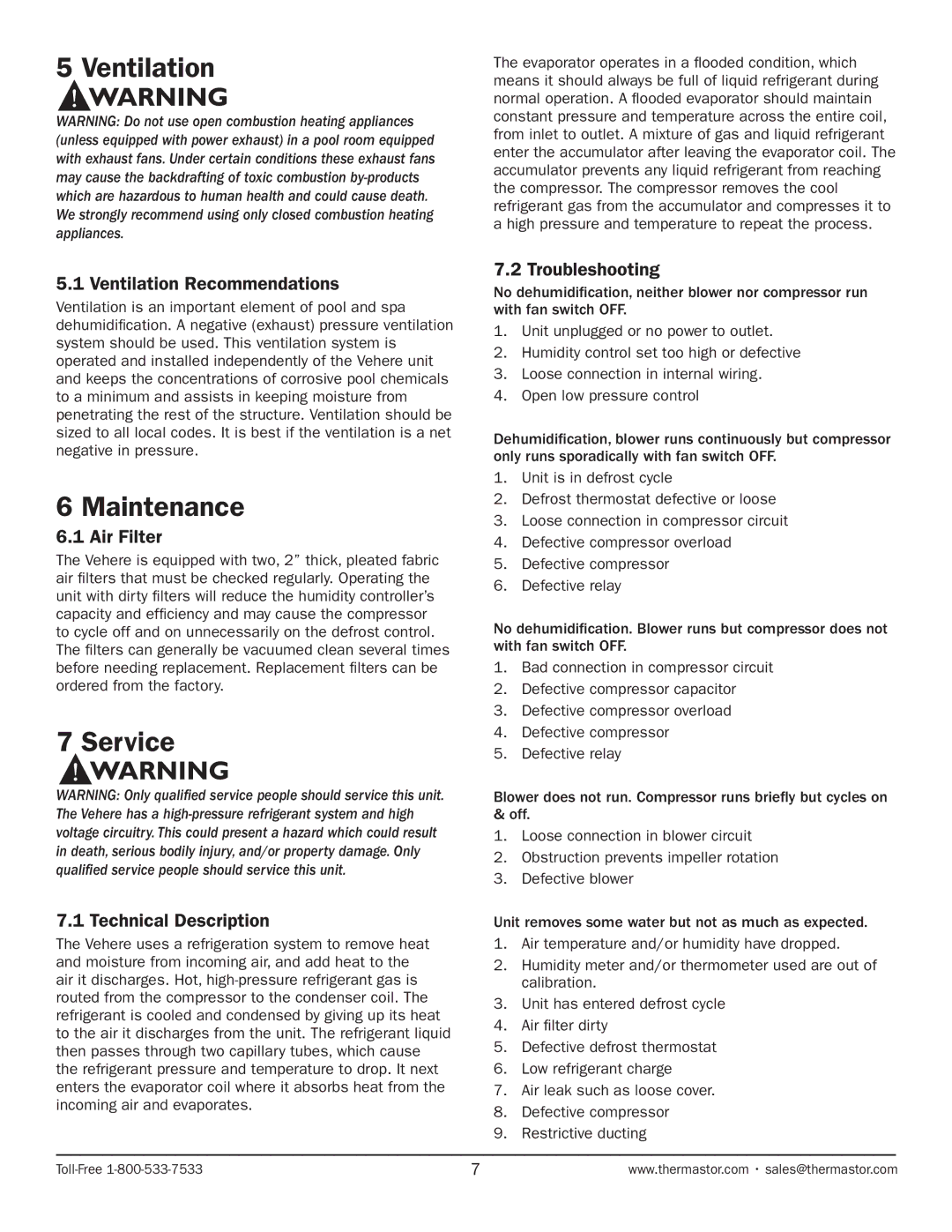
5 Ventilation
WARNING: Do not use open combustion heating appliances (unless equipped with power exhaust) in a pool room equipped with exhaust fans. Under certain conditions these exhaust fans may cause the backdrafting of toxic combustion
5.1 Ventilation Recommendations
Ventilation is an important element of pool and spa dehumidification. A negative (exhaust) pressure ventilation system should be used. This ventilation system is operated and installed independently of the Vehere unit and keeps the concentrations of corrosive pool chemicals to a minimum and assists in keeping moisture from penetrating the rest of the structure. Ventilation should be sized to all local codes. It is best if the ventilation is a net negative in pressure.
6 Maintenance
6.1 Air Filter
The Vehere is equipped with two, 2” thick, pleated fabric air filters that must be checked regularly. Operating the unit with dirty filters will reduce the humidity controller’s capacity and efficiency and may cause the compressor to cycle off and on unnecessarily on the defrost control. The filters can generally be vacuumed clean several times before needing replacement. Replacement filters can be ordered from the factory.
7 Service
WARNING: Only qualified service people should service this unit. The Vehere has a
7.1 Technical Description
The Vehere uses a refrigeration system to remove heat and moisture from incoming air, and add heat to the air it discharges. Hot,
The evaporator operates in a flooded condition, which means it should always be full of liquid refrigerant during normal operation. A flooded evaporator should maintain constant pressure and temperature across the entire coil, from inlet to outlet. A mixture of gas and liquid refrigerant enter the accumulator after leaving the evaporator coil. The accumulator prevents any liquid refrigerant from reaching the compressor. The compressor removes the cool refrigerant gas from the accumulator and compresses it to a high pressure and temperature to repeat the process.
7.2 Troubleshooting
No dehumidification, neither blower nor compressor run with fan switch OFF.
1.Unit unplugged or no power to outlet.
2.Humidity control set too high or defective
3.Loose connection in internal wiring.
4.Open low pressure control
Dehumidification, blower runs continuously but compressor only runs sporadically with fan switch OFF.
1.Unit is in defrost cycle
2.Defrost thermostat defective or loose
3.Loose connection in compressor circuit
4.Defective compressor overload
5.Defective compressor
6.Defective relay
No dehumidification. Blower runs but compressor does not with fan switch OFF.
1.Bad connection in compressor circuit
2.Defective compressor capacitor
3.Defective compressor overload
4.Defective compressor
5.Defective relay
Blower does not run. Compressor runs briefly but cycles on & off.
1.Loose connection in blower circuit
2.Obstruction prevents impeller rotation
3.Defective blower
Unit removes some water but not as much as expected.
1.Air temperature and/or humidity have dropped.
2.Humidity meter and/or thermometer used are out of calibration.
3.Unit has entered defrost cycle
4.Air filter dirty
5.Defective defrost thermostat
6.Low refrigerant charge
7.Air leak such as loose cover.
8.Defective compressor
9.Restrictive ducting
www.thermastor.com • sales@thermastor.com |
